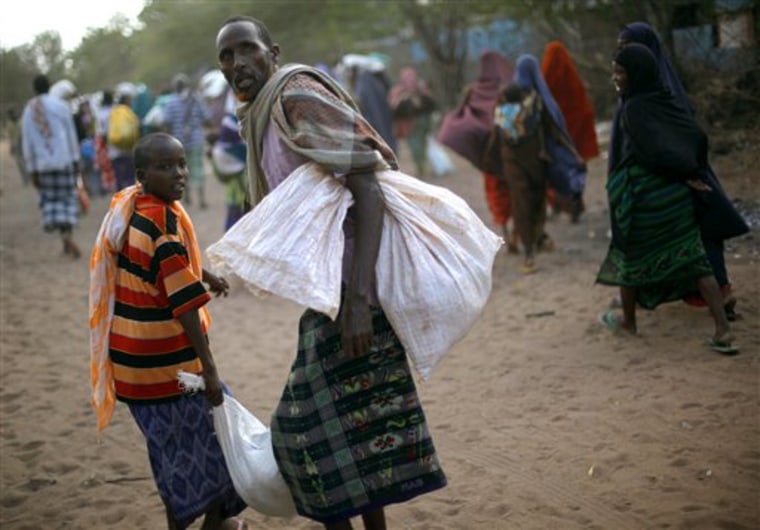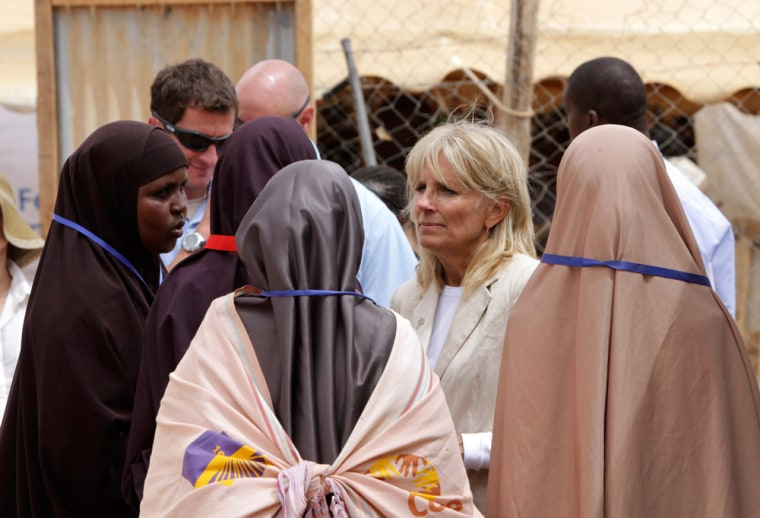A U.S. aid official warned Monday that hundreds of thousands of Somalis could die as famine spreads, amid a visit to Kenyan refugee camps by the wife of U.S. Vice President Joe Biden.
Jill Biden on Monday visited the world's largest refugee camp, Dadaab, where tens of thousands of Somali famine refugees have arrived in recent weeks.
Biden's trip is the highest-profile U.S. visit to drought-stricken East Africa since the numbers of refugees began dramatically increasing in June. Biden said the aim of her visit was to raise awareness and convince donors to give more.
"What I'm asking is for Americans to reach out and help because the situation is dire," said Biden, who met with two Somali mothers and their eight children during her visit to the camp. "There is hope if people start to pay attention to this."
More than 29,000 children under the age of 5 have died in the last 90 days in southern Somalia alone, according to U.S. estimates. The U.N. says 640,000 Somali children are acutely malnourished, suggesting the death toll of small children will rise in the coming weeks.
USAID administrator Raj Shah said models predict that hundreds of thousands of people could die from famine.
More than 12 million people in the Horn of Africa are in need of immediate food aid, including nearly half the Somali population. The U.N. has declared five famine zones in Somalia, including the camps for displaced people in Mogadishu.

Aid not reaching everyone in need
Aid was only reaching about 20 percent of the 2.6 million Somalis who needed it, said Mark Bowden, the U.N.'s top humanitarian official for Somalia. The situation was better in the Somali capital, where about half the city's 600,000 inhabitants were receiving aid, he said.
Transport and security were the two main problems, he said, and it was unclear what the effect would be of the Islamist withdrawal from their bases in the capital Saturday. There have been several serious gunfights at aid distributions recently, and at least 10 people have been killed.
"An absence of conflict does not mean that there is security here," he said. "There's always been factions and militias."
Kiki Ghebo, another top U.N. humanitarian official, said different kinds of aid were needed: food for the starving, vaccines and medical help to prevent disease outbreaks, and things like plastic sheeting and cooking utensils for those who had been forced to flee their homes because of the war and famine.
The United States is giving an additional $105 million in humanitarian aid for the Horn of Africa, where famine is spreading in Somalia, White House spokesman Jay Carney said on Monday.
The money, from U.S. President Barack Obama's Emergency Relief and Migration Assistance Fund, will provide "urgently needed food, health, shelter, water and sanitation assistance to those who desperately need help," Carney said.
The United States has provided about $565 million in humanitarian aid so far this year, he said.
